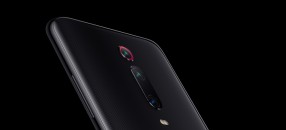Weekly poll: is the Redmi K20 Pro a true flagship killer? And what about the K20?

Every other year a flagship killer is born, destined to slay high prices – and in 2019 its name is Redmi K20. There’s two of them actually, the Pro model in particular might offer the best value for money we’ve seen recently. Better than even the Pocophone F1.
We’re talking about the Redmi K20 Pro, of course, and we have to start with clearing up the confusion surrounding the naming. This phone will be available as the Xiaomi Mi 9T Pro in some regions and Pocophone F2 Pro in others. Similarly, the vanilla K20 will be rebadged as Xiaomi Mi 9 or Pocophone F2.
Keep in mind that for the time being, both K20 models are available only in China. So, we don’t know their global prices yet, but the Pro should cost less than the Mi 9 while having almost the same feature set - perhaps even better.
It has the almost same 6.39” Super AMOLED display of 1080p resolution but with two changes. Firstly, the notch is swapped for a pop-up selfie camera (20MP) and the HDR10 support is gone. The in-display fingerprint reader is still here though.


6.39" Super AMOLED display (1080p+) • 20MP pop-up selfie camera
The triple camera on the rear is based on the same 48MP IMX586 sensor as the Mi 9. The other two cams – 13MP ultra-wide and 8MP 2x telephoto – use different sensors, but overall the hardware looks very promising.
The connectivity makes a trade – it gains a 3.5mm headphone jack, but loses the IR blaster compared to the Mi 9. Actually, you can compare the K20 Pro with the OnePlus 7 Pro and Asus Zenfone 6 too – just keep in mind that the Redmi has a lower price tag than all three.


Triple camera (48 + 13 + 8MP) • Snapdragon 855 chipset
The Redmi K20 Pro has a large 4,000mAh battery with 27W fast charging (QC4.0+). There’s no wireless charging, though. The other two major omissions are OIS for the cameras and waterproofing.
The Pro is powered by the Snapdragon 855 chipset with up to 8GB of RAM and 256GB of UFS 2.1 storage (no microSD slot, though).
The Redmi K20 is very nearly the same phone – the major change is switching to a Snapdragon 730 chipset. Charging speed is now capped at 18W (battery capacity is still 4,000mAh) and 4K video recording tops out at 30fps (the Pro can do 60fps). This is a limitation of both the chipset and the image sensor (IMX582, which is otherwise identical to the IMX586).


Redmi K20 and K20 Pro are available in Red and Blue
The spec sheet hints at two other differences, but we’ll have to get the two models in our office to check if they matter. The screens is listed just as “AMOLED” (so it may not be a Samsung panel) and the storage is not confirmed to be UFS 2.1. That’s something that we’ll have to test.
Note that the Redmi K20 is expected to be a good deal cheaper than the Pro (but again, we don’t know the global prices yet).
Related
Reader comments
- Imran Pawar
- 09 Jun 2019
- HsG
Nice look redmi k20 pro your all mobile different look redmi k20 pro
- Arif238
- 04 Jun 2019
- XTt
An entry level PCIe ssd is three times faster than a typical SATA ssd and I am not even talking about high bandwidth PCIe ssd which is way out of the league of a SATA ssd . This UFS 3.0 isn't even twice as fast as of UFS 2.1.
- Zendroid
- 04 Jun 2019
- pI5
Ufs is the storage. Ufs 2.1 vs 3.0 is like sata ssd vs pci ssd. Both still storage.







 Huawei
Huawei Samsung
Samsung Apple
Apple Xiaomi
Xiaomi Samsung
Samsung


